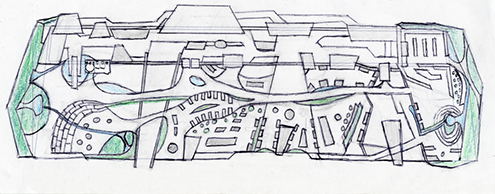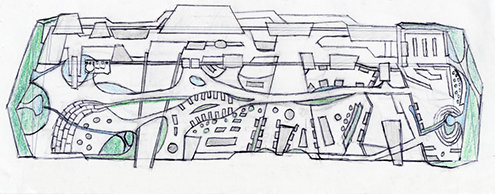Looking for ways to make a building and its occupants perform better? Put a microforest in it. According to Giancarlo Mangone’s doctoral research, vegetation in the built environment boosts creativity and decreases power consumption.
Giancarlo Mangone’s experiments show that the psychological effect of a microforest is even greater than that of sunblinds. In an African experiment, he placed a large quantity of plants in the courtyard of an office building of 13 000 m2. This resulted in a reduction of energy consumption by 2 to 3 percent. When the building’s occupants started using the courtyard, the results were even greater. “With five percent of the people in the courtyard, the total energy of the building went down by ten percent,” says Mangone. In addition, their productivity increased as well.

A second test was held in De Lier at Priva, a supplier of horticulture. This is where Mangone placed 150 plants. Based on measurements and surveys, he noted that the staff experienced a significant improvement in thermal comfort. “Our measurements show that this wasn’t caused by the change in temperature, light or humidity. The presence of the plants caused a psychological effect.” Mangone recorded the activity level of the test persons and their clothing and regularly moved the plants from one room to another. Other factors were found to only play a marginal role. People in areas without plants complained about the heat while those in the microforest felt comfortable, even when temperatures rose to 25°C.
The explanation? Possibly the ‘outdoor feeling’, Mangone thinks. Previously existing literature shows that the feeling of thermal comfort is psychological for fifty percent. Once people can regulate their body temperature with a fan or air conditioning, they accept higher temperature differences. The test persons did not have these opportunities, yet they felt comfortable. A possible explanation is that one cannot regulate the temperature in a forest either ¬ this is part of the ‘outdoor feeling’. Of course, the test persons could self¬regulate whether or not to go and sit in the microforest. In his doctoral research Performative Microforests: Investigating the potential benefits of integrating spatial vegetation environments into buildings, in regards to the performance of buildings, their occupants + local ecosystems, Mangone finds that the rise in productivity through microforests can result in a climb up to 10¬15 percent. This could also be an economic reason to promote the integration of microforests in architecture. Interviews with test persons showed that not every activity improves from vegetation. One’s creativity will significantly improve during brainstorming and evaluation sessions or plan development. “However, it would be better to do work that needs concentration and boring things like accounting in a regular office.”

Gardens or ‘green walls’ as placed in some office buildings have much less of a psychological impact than microforests with stratified vegetation. This is because they are usually separated from work areas. A central area with trees in a building, such as the one in the Faculty of Architecture at the TU Delft, provides the possibility for a minimum separation between (micro)forest and workspace, and is also more cost effective. Further research must show whether microforests in a built environment also contribute to a greater sense of ecology among its users.
